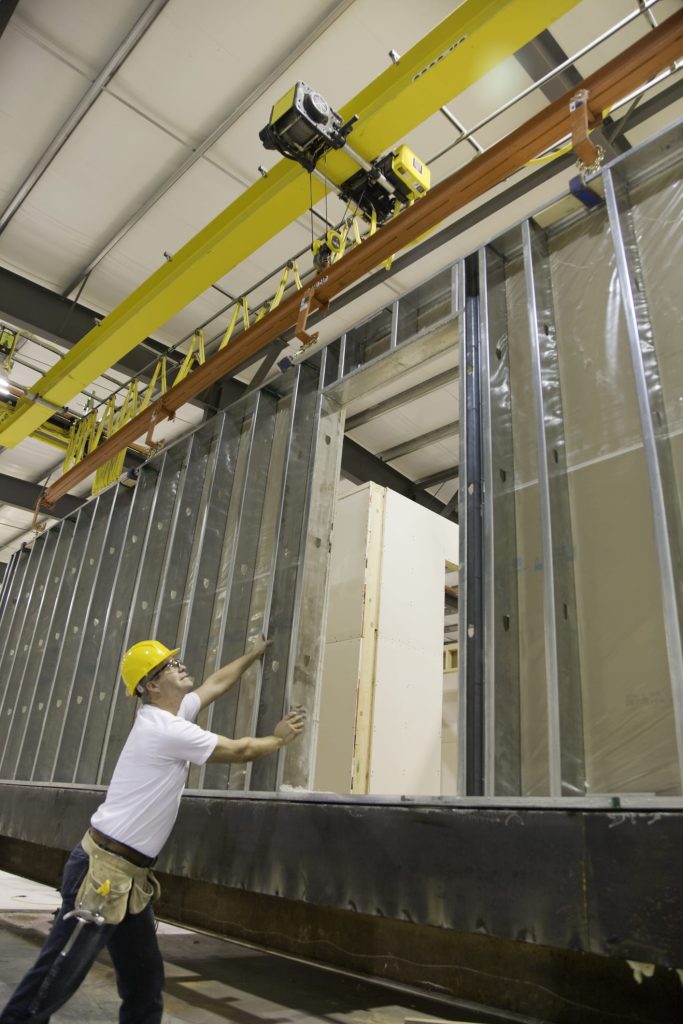You’ve got a huge, crowded jobsite full equipment and subcontractors. Your managers are trying to coordinate subcontractors and stay on-schedule, while struggling to fill positions because of the ongoing labor shortage. Mistakes and a lack of planning are costing you money in wasted materials, and a storm is coming in two days that could set production back a week. Also, you’re concerned about one subcontractor who seems to keep violating regulations, but you can’t prove it’s not your firm. Sound familiar?
You’re not alone. Historically, construction firms have had to deal numerous smaller projects going on at the jobsite simultaneously. This prolongs schedules, as firms try to manage subcontractors sequentially, and become vulnerable to safety issues and project delays as numerous crews compete for shared resources and equipment. According to the U.S. Bureau of Labor Statistics, 57% of activities on a construction site are wasteful and don’t add value. And The McKinsey Institute reported that large construction projects are up to 80% over budget.
And that’s not the worst part. The labor shortage is a problem not likely to go away soon — nearly two-thirds (64%) of contractors expect the cost of hiring skilled workers to increase in the next six months. Safety, too, is a valid concern — according to OSHA, standards for fall protection, scaffolding and ladders were cited among the top 10 most frequently violated in 2018.
Fortunately, for many firms, offsite construction is helping to address many of these concerns.
Let’s Start with Some Definitions:
Offsite construction consists of the planning, designing, fabricating and assembling building components somewhere other than the place where they will be installed. This includes both prefabrication and modular construction.
Prefabrication is when building components are built at a factory and assembled onsite, whereas in modular construction, building components are constructed in modules offsite, then transported to the building site for final assembly. Firms may choose to use either approach or a hybrid of the two — and for good reasons.
According to the U.S. Chamber of Commerce Commercial Construction’s Q1 Index, contractors are turning to prefabricated and modular building materials as a way to increase efficiency, worker productivity and cost savings. Today, 50% of contractors and 72% of general contractors report their companies are using prefabricated components.
Here are five ways offsite construction helps firms save money and stay on schedule:
- Enables better control: Modular construction takes place in highly controlled environments, which help to eliminate delays caused by weather, reduce safety concerns and improve building quality.
- Continues, rain or shine: Onsite construction schedules are always subject to changes in the weather and other site conditions such as traffic, noise restrictions, etc. In the controlled environment provided by offsite construction, work continues year-round, regardless of weather or other factors that could cause delay at the jobsite.
- Produces less waste: Detailed up-front planning is necessary to produce modules in bulk. Designs are repeatable, so the builders become increasingly adept and make fewer mistakes as they go along. Precision cutting and indoor material shortage enable further savings. As a result, offsite construction facilities produce up to 40% less waste than traditional construction.
- Addresses the labor shortage: In off-site construction, firms only need to train a small number of full-time employees to create repeatable designs. Because modules are built off-site then transported to the jobsite when it’s time to incorporate them into the larger project, on-site work continues without interruption while the modules are being built and transported.
- Improves safety: A recent Smart Market Report released by McGraw Hill Construction found that 34% of firms using prefabrication and modularization processes improved project safety. On the other hand, 49% said safer construction sites are a primary driver for incorporating modular construction into their projects. In addition to maintaining a controlled environment, firms can install construction cameras at strategic locations within the offsite facility as well as during transport, to ensure safety and adherence to regulations.
Potential savings from offsite construction are impressive — out of over 800 architecture, engineering and contracting (AEC) professionals surveyed by McGraw-Hill, 66% report that project schedules decreased; 65% report that project budgets decreased; and 77% report that construction site waste decreased.
Demand for Construction Paves Way for More Off-Site Building
It’s good news that demand for new construction is growing, but with the continued labor shortage, the expectation for faster completions and the rising costs of materials, more firms will likely adopt offsite construction to stay profitable.
TrueLook’s indoor construction cameras are designed for such offsite facilities, and are a perfect solution for improving safety and ensuring regulations are consistently followed, during the build process as well as when the modules are in transport. See a demo here.


